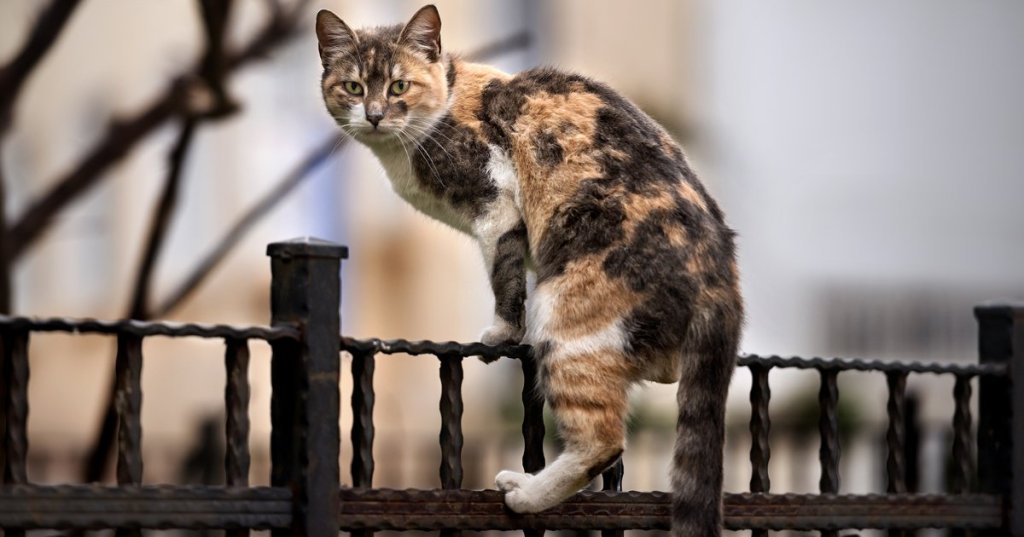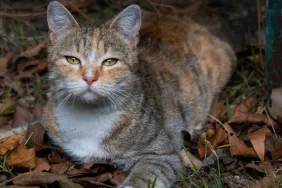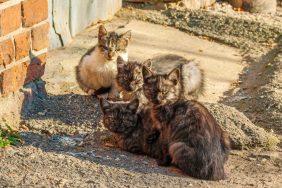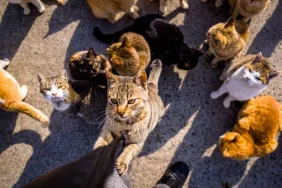As warmer weather starts to blow in across the U.S. and springtime finally makes its way to even some of the colder corners of the country, animal advocates, humane organizations, and community members are trying to figure out how to tackle one of the most pervasive animal-related issues there is — feral cats and what to do about them.
A feral cat is different from a household cat or even a stray. Stray cats are pet cats who are lost or who have been abandoned by their owners. They are more used to human contact and are relatively tame. But feral cats are closer to wild cats. They are typically the offspring of unsprayed/unneutered strays, outdoor cats, and other ferals. Feral cats are usually fearful of human contact, and many choose instead to live in colonies of other ferals.
“True ferals, by definition, are not adoptable because they are not socialized to people,” explains Susan Richmond, the founder of feral cat advocacy group Neighborhood Cats.
The number of feral cats in this country is staggering. According to Humane Society of the United States (HSUS), there are upwards of 50 million feral cats at large in the U.S. And because female cats can reproduce two to three times every year, the number of feral cats continues to grow exponentially without human intervention — but exactly what that human intervention should be is currently the subject of heated debate in towns and cities from coast to coast.
One practice, favored by most animal advocacy groups, is something called the Trap-Neuter-Release (or Return) approach — or TNR for short. Feral cats are first trapped in live humane cat traps, usually lured into the contraption by the smell of food. The trapped ferals are then transported to a veterinary office or spay/neuter clinic, where they are given a basic exam and vaccinations before undergoing spay or neuter surgery. Following the sterilization surgery, feral cats are then released back out into the wild, to live out their lives without producing additional litters of feral cats.
“If they’re hungry and they haven’t seen traps before, they’re not hard to catch,” Washington resident and feral cat trapper Marty King tells GMA News Online. “But some of them are very smart. There’s a female I’ve been trying to get for a couple of years now and I haven’t been able to get her yet.”
New York City resident Stephanie Seiler is one of 5,500 volunteers working tirelessly to help get the Big Apple’s feral cat population under control. The New York Times recently followed Seiler on one of her 12-hour humane trap stakeouts in Brooklyn. Seiler finally caught a feral tom in a nearby trap after waiting for hours. She’s calling him, cleverly, Tom Waits.
NYC is one of the many U.S. cities that have adopted a TNR model. But the movement toward TNR has not come easy, and is certainly not backlash-free. TNR critics say the sterilization of feral cats does not tackle the overpopulation issue fast enough.
Early this year, a handful of conservation groups, including the American Bird Conservancy and a number of Audubon Societies, sent a petition to the U.S. Department of the Interior demanding “swift action” to eliminate feral cats, saying that TNR programs have been a failure. Cats, the organizations argue, not only threaten wild bird and mammal populations, but also transmit diseases and parasites to humans, citing a variety of studies.
According to one of the studies mentioned in the petition, free-roaming felines are responsible for killing 2.4 billion birds and 12.3 billion mammals in the U.S. every year.
“The only sure way to simultaneously protect wildlife and people is to remove feral cats from the landscape,” the petition argues, urging a euthanasia model as a more effective method of controlling feral cat populations. TNR, they say, makes no sense.
“Outdoor cats obliterate wildlife,” Robert Johns, a spokesperson with the American Bird Conservancy, tells the New York Times, “and yet they get special treatment. We don’t allow colonies of feral dogs to roam around.”
But feral cat advocates are jumping to the kitties’ defense, saying ferals are unjustly blamed for problems primarily caused by people — not felines. They say problems like habitat loss and pollution are primarily to blame for the decline in wildlife populations.
“We just don’t think that killing is the answer to the problem,” Laura Zapico, a board member for the Feral Cat Coalition, tells UTSanDiego.com. “We should be ensuring that wildlife is protected, but focusing just on cats and not on human impacts won’t solve the problem.”
Sources: UTSanDiego.com, New York Times, GMA News Online









